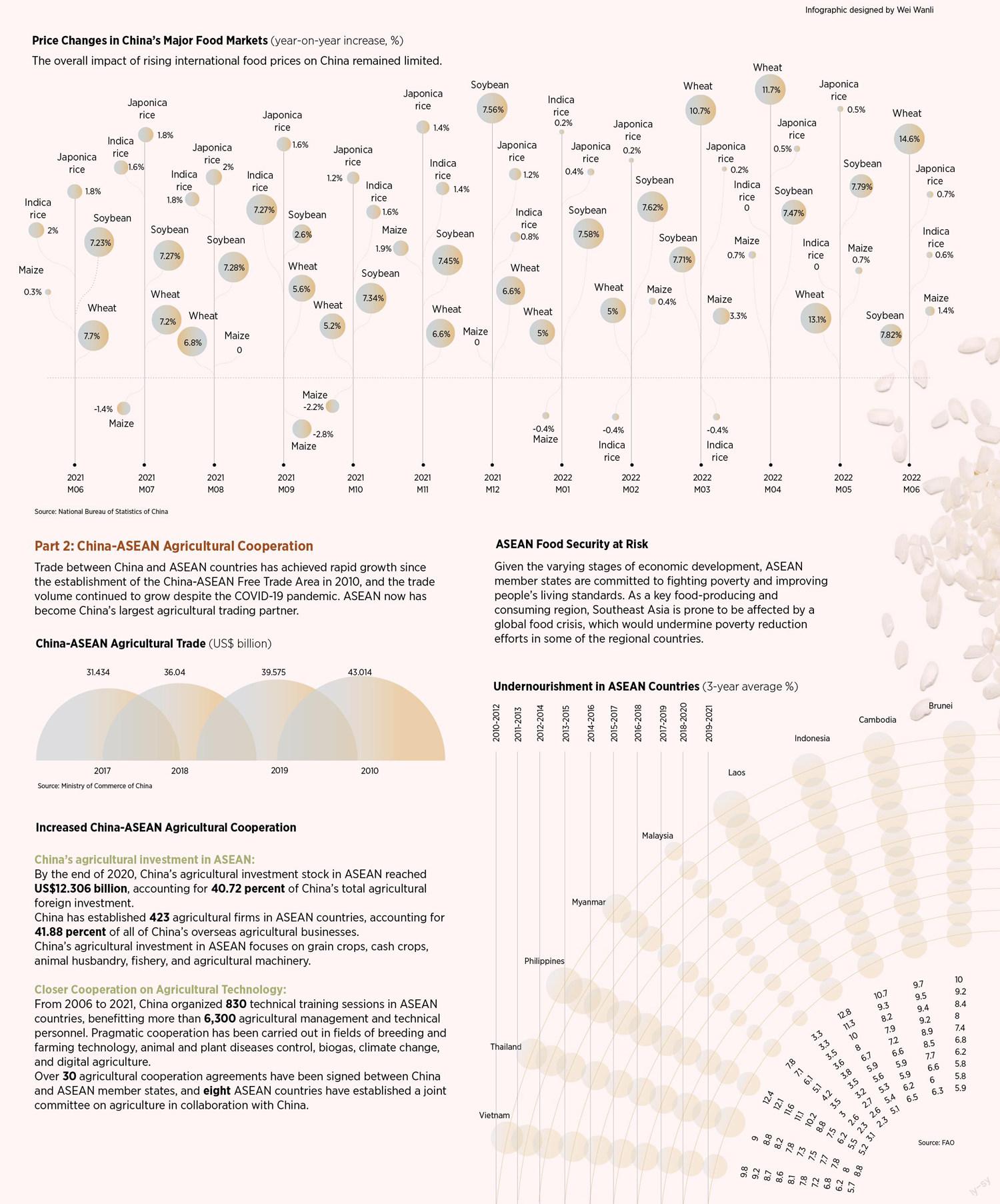China and the Global Food Crisis
2022-05-30GuoXixian,YuanYanan
Guo Xixian, Yuan Yanan


With one-fifth of the worlds population and about one-fourth of global food output, China is both a major grain producer and importer. To cope with the rising international food prices, the Chinese government has taken a series of measures including use of emergency reserves and policy support for logistics, imports, and production. So far the impact of fluctuations in the international market on Chinas domestic market has been limited. In addition to improving food self-sufficiency, cooperation with ASEAN member states and other members of the international community is also a pragmatic solution to the global food crisis.
Major Importer of Agricultural Products
In 2021, Chinas agricultural imports and exports totaled US$304.17 billion, a year-on-year increase of 23.2 percent, and the trade deficit registered US$135.47 billion, an increase of 42.9 percent over the previous year.
Part 1: Sufficient Domestic Food Supply in China
With a steady growth of grain output, China has ensured sufficient domestic food supply and price stability so far.
Part 2: China-ASEAN Agricultural Cooperation
Trade between China and ASEAN countries has achieved rapid growth since the establishment of the China-ASEAN Free Trade Area in 2010, and the trade volume continued to grow despite the COVID-19 pandemic. ASEAN now has become Chinas largest agricultural trading partner.
ASEAN Food Security at Risk
Given the varying stages of economic development, ASEAN member states are committed to fighting poverty and improving peoples living standards. As a key food-producing and consuming region, Southeast Asia is prone to be affected by a global food crisis, which would undermine poverty reduction efforts in some of the regional countries.
Chinas agricultural investment in ASEAN:
By the end of 2020, Chinas agricultural investment stock in ASEAN reached US$12.306 billion, accounting for 40.72 percent of Chinas total agricultural foreign investment.
China has established 423 agricultural firms in ASEAN countries, accounting for 41.88 percent of all of Chinas overseas agricultural businesses.
Chinas agricultural investment in ASEAN focuses on grain crops, cash crops, animal husbandry, fishery, and agricultural machinery.
Closer Cooperation on Agricultural Technology:
From 2006 to 2021, China organized 830 technical training sessions in ASEAN countries, benefitting more than 6,300 agricultural management and technical personnel. Pragmatic cooperation has been carried out in fields of breeding and farming technology, animal and plant diseases control, biogas, climate change, and digital agriculture.
Over 30 agricultural cooperation agreements have been signed between China and ASEAN member states, and eight ASEAN countries have established a joint committee on agriculture in collaboration with China.
